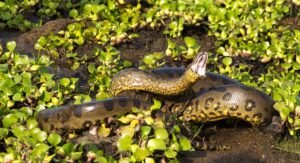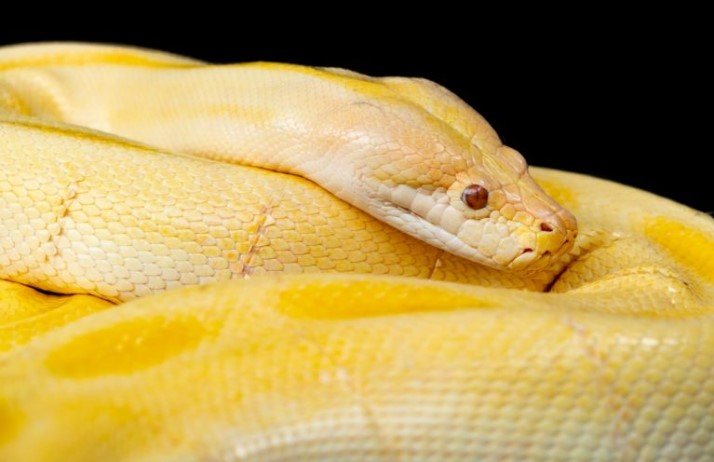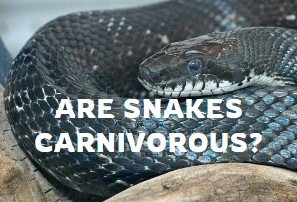Introduction
In the realm of serpents, one species stands out as the undisputed giant—the Green Anaconda (Eunectes murinus). This colossal snake, found in the expansive waterways of the Amazon rainforest in South America, has earned its reputation as the largest snake on Earth. Let’s delve into the details of the Green Anaconda, exploring its remarkable features, habitat, and role as a top predator in the intricate web of the Amazonian ecosystem.

Physical Characteristics
Size and Dimensions
The Green Anaconda boasts impressive dimensions, with adult individuals surpassing 20 feet (6 meters) in length and weighing over 200 pounds (90 kilograms). Some reports even claim lengths exceeding these already substantial figures.
Coloration and Patterns
Distinguished by its olive-green coloration, the Green Anaconda blends seamlessly with the lush vegetation of the Amazon rainforest. Dark spots and patterns adorn its body, providing effective camouflage in its aquatic habitats.
Habitat and Distribution
Amazonian Waterways
This massive snake predominantly inhabits the waterways of the Amazon rainforest, including slow-moving rivers, swamps, and marshes. Its affinity for aquatic environments is complemented by exceptional swimming abilities, making it a formidable presence in the watery expanses.
Behavioral Traits
Constricting Abilities
The Green Anaconda is a constrictor snake, employing powerful coiling motions to subdue its prey. This formidable hunting strategy allows it to tackle a diverse range of animals, including fish, birds, mammals, and even caimans.
Elusive Nature
Despite its colossal size, the Green Anaconda is known for its elusive nature. These snakes are adept at concealing themselves within the dense vegetation of the Amazon, making encounters with them relatively rare.
Role as an Apex Predator
Predatory Range
As an apex predator, the Green Anaconda occupies the highest trophic level in its ecosystem. Its menu includes a broad spectrum of prey, showcasing its adaptability as a top-tier predator.
Maintaining Ecosystem Balance
By controlling populations of smaller mammals, birds, and other creatures, the Green Anaconda plays a vital role in maintaining the delicate balance of the Amazonian ecosystem. Its presence contributes to the health and diversity of this vibrant biome.
Conservation Status and Threats
Habitat Encroachment
The Green Anaconda faces threats due to habitat encroachment caused by human activities, such as deforestation and urbanization. Loss of suitable habitats poses a significant risk to their survival.
Illegal Pet Trade
Another challenge comes from the illegal pet trade, where these colossal snakes are sometimes captured and traded as exotic pets. This activity not only disrupts natural populations but also raises concerns about the well-being of these animals in captivity.
Conclusion
In conclusion, the Green Anaconda stands as a true titan among serpents, reigning as the world’s largest snake. Its impressive size, remarkable adaptations, and pivotal role as an apex predator in the Amazon make it a species of great significance. As we navigate the complexities of conservation and coexistence, understanding and appreciating the Green Anaconda’s place in the intricate tapestry of the rainforest becomes crucial for ensuring the preservation of this iconic serpent.
Learn more about How these serpents catches prey.





Leave a Reply